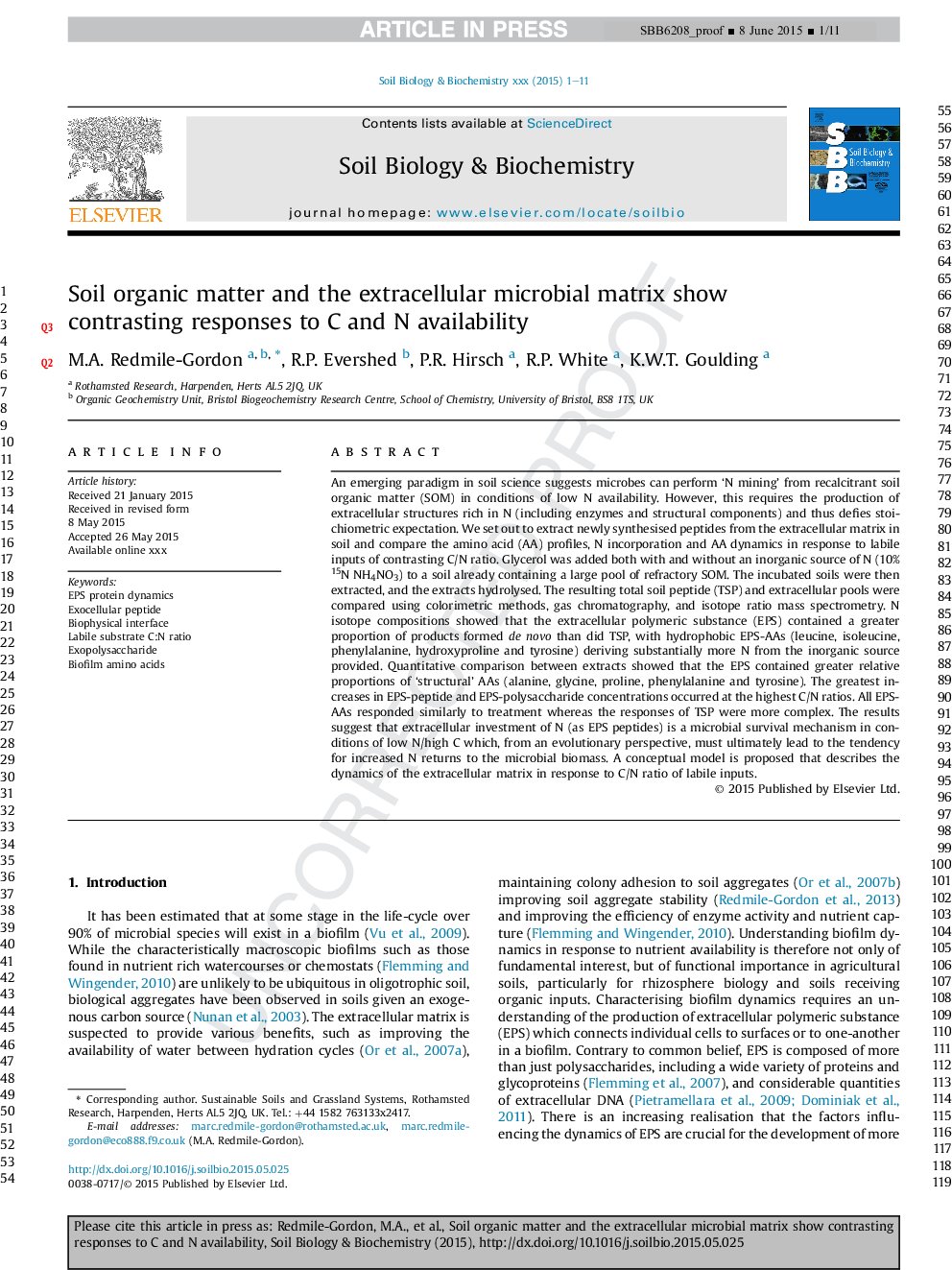| Article ID | Journal | Published Year | Pages | File Type |
|---|---|---|---|---|
| 8364013 | Soil Biology and Biochemistry | 2015 | 11 Pages |
Abstract
An emerging paradigm in soil science suggests microbes can perform 'N mining' from recalcitrant soil organic matter (SOM) in conditions of low N availability. However, this requires the production of extracellular structures rich in N (including enzymes and structural components) and thus defies stoichiometric expectation. We set out to extract newly synthesised peptides from the extracellular matrix in soil and compare the amino acid (AA) profiles, N incorporation and AA dynamics in response to labile inputs of contrasting C/N ratio. Glycerol was added both with and without an inorganic source of N (10% 15N labelled NH4NO3) to a soil already containing a large pool of refractory SOM and incubated for 10 days. The resulting total soil peptide (TSP) and extracellular pools were compared using colorimetric methods, gas chromatography, and isotope ratio mass spectrometry. N isotope compositions showed that the extracellular polymeric substance (EPS) contained a greater proportion of products formed de novo than did TSP, with hydrophobic EPS-AAs (leucine, isoleucine, phenylalanine, hydroxyproline and tyrosine) deriving substantially more N from the inorganic source provided. Quantitative comparison between extracts showed that the EPS contained greater relative proportions of alanine, glycine, proline, phenylalanine and tyrosine. The greatest increases in EPS-peptide and EPS-polysaccharide concentrations occurred at the highest C/N ratios. All EPS-AAs responded similarly to treatment whereas the responses of TSP were more complex. The results suggest that extracellular investment of N (as EPS peptides) is a microbial survival mechanism in conditions of low N/high C which, from an evolutionary perspective, must ultimately lead to the tendency for increased N returns to the microbial biomass. A conceptual model is proposed that describes the dynamics of the extracellular matrix in response to the C/N ratio of labile inputs.
Keywords
Related Topics
Life Sciences
Agricultural and Biological Sciences
Soil Science
Authors
M.A. Redmile-Gordon, R.P. Evershed, P.R. Hirsch, R.P. White, K.W.T. Goulding,
